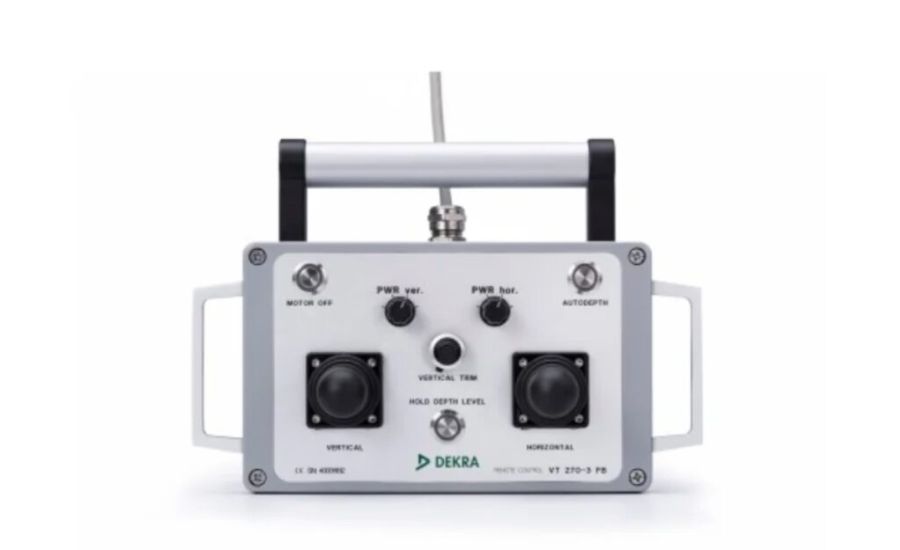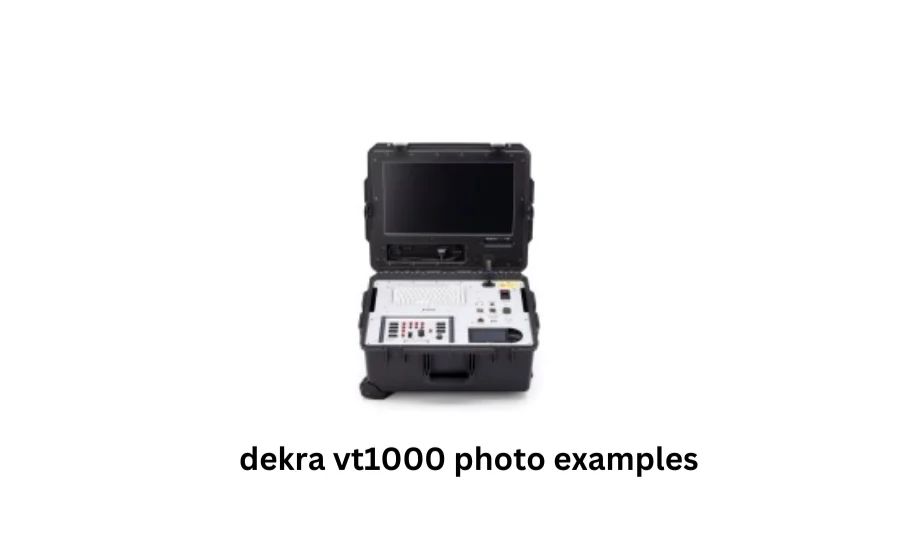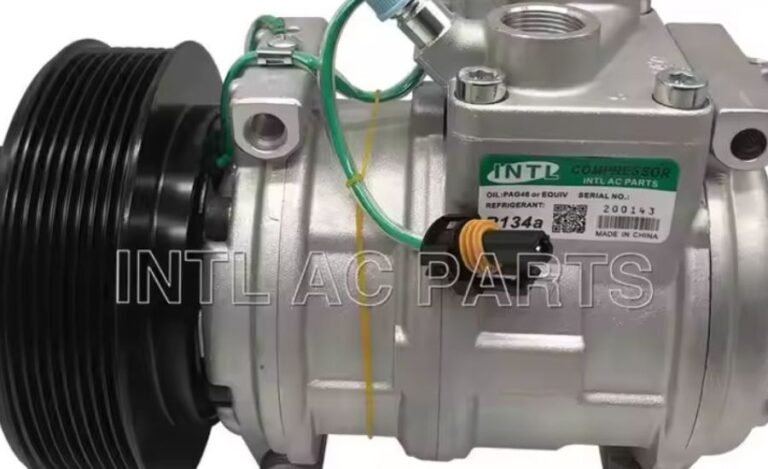Vt1000 Pitting Photo Examples Understanding, Benefits & More
Introduction to Vt1000 Pitting Photo Examples
Having dependable and efficient equipment is vital in hazardous conditions, especially in ATEX Zone 1 locations where explosive threats are a continual concern. Among the complex solutions created especially for these high-risk circumstances is the Dekra VT1000 pitting camera.

The durable 30x optical zoom and Full HD resolution of the Dekra VT1000 guarantee that you will be able to take detailed and crisp photos under even the most difficult circumstances. This cutting-edge camera is a vital tool for professionals working in dangerous locations since it is designed to fulfill the strict safety and accuracy criteria needed in such volatile environments.
Understanding ATEX Zone 1 Ensuring Safety in High-Risk Environments
Areas where explosive atmospheres are predicted to often form under typical operational conditions are designated as ATEX Zone 1. In settings where combustible materials, including glasses, vapors, or dust, may combine with air during routine operations, this classification is essential. These risks are frequently encountered by sectors like chemical processing, oil and gas extraction, and pharmaceutical manufacture. Every piece of equipment in these kinds of environments needs to be carefully engineered to eliminate any chance of igniting, protecting both people and procedures.
Even little equipment failures might have dangerous repercussions in these high-risk ATEX Zone 1 situations. Conventional cameras provide a considerable risk of setting the flammable objects on fire since they may produce heat or sparks. For this reason, it is crucial to use specific equipment made for these circumstances in order to preserve operating effectiveness and safety.
One example of the kind of specialized equipment needed for such conditions is the DEKRA VT1000 camera. The DEKRA VT1000 is designed to comply with the strict safety regulations of ATEX Zone 1. Its sturdy construction and sophisticated imaging capabilities reduce potential hazards. Because of the way it is built, it can function safely in dangerous environments and produce accurate and clear imagery. This guarantees that in these difficult circumstances, critical visual examinations may be carried out efficiently without sacrificing safety or effectiveness.
What is the DEKRA VT1000?
Modern car inspection equipment like the DEKRA VT1000 is made to evaluate the state of important parts of the car, such as the brakes and tires. This instrument, which was created by DEKRA, a well-known worldwide pioneer in safety and testing, assists professionals in identifying wear and tear, especially in commercial fleets.
The DEKRA VT1000’s ability to take high-resolution pictures that highlight pitting is one of its best qualities. Small dents or uneven wear patterns, known as pitting, can appear on tires and brake discs, two important automotive components. Finding these flaws is crucial since they have a big impact on performance and safety, which makes the VT1000 a great tool for preserving car dependability.
Why Are Pitting Images Important?
The DEKRA VT1000’s pitting photos are essential for seeing wear early on that might not be obvious right away. These in-depth photos provide a more thorough understanding of a car’s state and enable the early detection of any problems before they worsen. For example, brake disc pitting can impair a car’s stopping ability and raise the possibility of collisions.
Fleet management, maintenance, and drivers can better comprehend a vehicle’s status and respond quickly to any difficulties by evaluating these photographs. This proactive strategy guarantees the safety and optimal performance of automobiles.
How the DEKRA VT1000 Captures Pitting Images
The VT1000 carefully inspects car parts using high-resolution cameras and cutting-edge sensors, creating detailed pictures that catch even the tiniest pits and fractures. This advanced instrument provides a more comprehensive analysis, beyond conventional visual exams. With its sophisticated algorithms, the VT1000 identifies problem areas and makes prompt repairs or replacements possible.
The Crucial Role of Specialized Cameras in ATEX Zone 1
Conventional cameras are insufficient in ATEX Zone 1 conditions, where safety is paramount and even the slightest error can have dire consequences. Because standard cameras have the potential to produce heat or sparks that could ignite the combustible atmosphere, they can offer serious risks in these high-stakes situations. Because of this, specialist cameras are not only advantageous but also necessary to guarantee both operation and safety.
This unique technology is demonstrated by the DEKRA VT1000 pitting pictures camera. With its innovative features that reduce the risk of ignition, the DEKRA VT1000 is designed to exceed the rigorous safety standards needed for ATEX Zone 1. It produces crisp, detailed images and is suitable for use in hazardous environments due to its sturdy design and precision engineering. This capacity is necessary to carry out crucial visual checks without endangering environmental safety. The DEKRA VT1000 guarantees operational efficiency and safety even in the most demanding industrial environments by utilizing such cutting-edge technologies.
Optimizing the Use of the DEKRA VT1000
1. Comprehensive Training for Operators: Operators must receive comprehensive training in order to make the most out of the DEKRA VT1000 pitting pictures camera. This should cover everything, from becoming familiar with the functions on the camera to knowing the ideal methods for setting upward and taking pictures. Analyzing the camera’s high-definition photos and videos should be part of the training as well. Gaining the most accurate results requires knowing how to use the camera’s advanced functions and adjusting its settings. Ensuring that operators can fully utilize the DEKRA VT1000 leads to more accurate inspections and increased safety. This may be achieved by investing in both initial and continuous training. The efficacy of inspections as a whole as well as operational efficiency can be greatly increased by skilled operators.
2. Routine Maintenance and Calibration: Despite the DEKRA VT1000’s sturdy construction, it requires routine calibration and maintenance to function at its peak. In order to avoid picture distortion caused by dust or smudges, maintenance should be performed on the camera lens. Additionally, the zoom mechanism should be tested for smooth operation and all seals and connectors should be checked for security. Maintaining the accuracy and dependability of the camera requires periodic calibration. Maintaining a regular maintenance plan guarantees constant image quality, increases camera longevity, and averts any performance problems. Clear and dependable visuals are essential for accurate inspections and efficient monitoring, and they require regular maintenance to be maintained.
3. Integration with Existing Systems: The DEKRA VT1000’s usefulness may be significantly increased for enterprises that utilize a variety of monitoring and inspection tools by connecting it with current systems. A more comprehensive image of the monitored environment may be obtained by combining the visual data from the DEKRA VT1000 with information from other technologies, including sensors or data analytics tools. By tying visual data to other data, this integrated method enables assessments that are more thorough and precise. Better situational awareness, decision-making, and general data analysis are achieved by integrating the DEKRA VT1000 with other systems. This enhances management of hazardous conditions and produces more efficient results.
Key Features of the DEKRA VT1000
Full HD resolution is provided by the DEKRA VT1000 pitting imaging camera, providing remarkable picture and video quality that is essential in dangerous areas.

The high-definition capabilities of the camera enables the accurate capturing of visual details in environments where safety and operational efficiency are critical, such as the oil and gas sector, chemical processing, and pharmaceuticals. This degree of clarity is essential for precise evaluation and possible problem-solving.
Operators may make educated decisions by using the DEKRA VT1000 to capture environmental conditions in real-time, monitor intricate operations, and check sophisticated gear. The improved image quality contributes to maintaining operating efficiency and safety requirements in addition to helping identify any issues early on.
Benefits of the DEKRA VT1000
1-Enhanced Safety: By allowing operators to conduct inspections and keep an eye on circumstances from a safe distance, the DEKRA VT1000 improves safety in high-risk situations. This lowers the requirement for workers to enter dangerous areas, lowering the possibility of mishaps and injuries. The DEKRA VT1000 improves workplace safety by reducing direct human exposure to explosive environments and other hazards. It also aids in ensuring compliance with strict safety rules. This technology is a vital resource in sectors where worker safety is of the utmost importance because it not only safeguards employees but also improves overall operational safety.
2-Enhanced Efficiency: By streamlining inspection and monitoring procedures, the DEKRA VT1000 greatly increases operating efficiency. Its sophisticated high-resolution imaging capabilities enable fast and thorough data collection, expediting inspections and hastening the detection of possible problems. The time and resources needed for visual inspections are decreased by this enhanced approach, which speeds up issue resolution. The DEKRA VT1000 maximizes time management and increases data accuracy, which lowers labor expenses and boosts production for enterprises.
3-Cost-Effective Investment: Although the DEKRA VT1000 may initially cost more than other cameras, in the long run, its advantages over other cameras make it an economical choice. Because it was built with longevity in mind, it needs maintenance less frequently, which lowers repair costs and downtime. Further value is added by its ability to function securely in explosive situations, which helps avoid expensive mishaps and production halts. The DEKRA VT1000 is a financially smart option for companies that emphasize safety and long-term savings since it offers better safety, less operational risks, and dependability over the course of its existence.
Applications for the DEKRA VT1000
1. Industrial Inspections:The DEKRA VT1000 pitting imaging camera is essential for carrying out thorough inspections in sectors like oil and gas, where performance and safety are paramount. This camera’s 30x optical zoom and Full HD resolution enable inspectors to evaluate structural elements, pipes, and equipment from a safe distance. Its high-definition imagery guarantees thorough assessments without requiring you to be in close contact to potentially dangerous equipment, particularly in locations where direct access is prohibited by safety regulations. The ability to conduct comprehensive, remote inspections lowers the possibility of mishaps and minimizes downtime while promoting safe and efficient equipment operation.
2. Process Monitoring:In ATEX Zone 1 situations, where constant vigilance is crucial, the DEKRA VT1000 performs exceptionally well at monitoring continuous industrial operations. Because of its high-definition video capabilities, operators may watch and record important operations in real-time, which makes it easier to identify possible problems or safety hazards early on. The DEKRA VT1000’s sharp, crisp images make it easier to confirm that operations are going as planned and notify operators of any anomalies that might indicate issues. By preventing process interruptions, this proactive monitoring strategy helps maintain operational effectiveness and safety.
3. Emergency Response:The DEKRA VT1000 proves to be an indispensable instrument for emergency teams in the event of gas leaks, equipment faults, or other hazardous occurrences. Its ATEX certification and tough build guarantee that it can function properly in explosive environments, which makes it perfect for taking vital visual data in perilous circumstances. Because of the camera’s dependability in these circumstances, responding emergency personnel can evaluate and record situations without endangering their own safety. The DEKRA VT1000’s quick and precise visual assessments facilitate efficient decision-making and reaction tactics, which are essential for lessening the effects of emergencies and protecting people and property.
4. Research and Development:The DEKRA VT1000 offers crucial visual documentation to enable technological innovation and equipment upgrades in research and development carried out in hazardous situations. High-quality photographs of experiments, prototypes, and novel processes can be captured by researchers using the camera, enabling thorough analysis and assessment. The camera’s Full HD image capabilities are essential for closely inspecting minute details and precisely recording discoveries, both of which promote the development of new technologies and the improvement of current procedures. The DEKRA VT1000 contributes significantly to advancement and the creation of safer and more effective industrial solutions by providing dependable and understandable visual data.
Common Causes of Pitting
Pitting in automotive components is caused by a number of factors:
Corrosion: In high-moisture settings, brake discs are especially vulnerable to pitting brought on by rust or corrosion.
High Temperatures: When metal surfaces deteriorate over time due to excessive heat produced during braking, pitting may result.
Debris: Tiny fragments, such dirt and pebbles, can cause pitting in tires and other surface damage.
Age: Natural wear and tear on components occurs with age, and this typically shows up as pitting on different portions of the vehicle.
Facts :
- DEKRA VT1000 Overview: The DEKRA VT1000 is a specialized camera designed for use in high-risk environments, such as ATEX Zone 1, where explosive atmospheres are common. It features 30x optical zoom, Full HD resolution, and is engineered for safety and accuracy in volatile conditions.
- Pitting in Automotive Components: Pitting can occur in critical vehicle parts such as brake discs and tires. Common causes include corrosion, high temperatures, debris, and general wear over time. Early detection of pitting is essential for maintaining vehicle safety and performance.
- Application in Hazardous Zones: The DEKRA VT1000 is built to meet the stringent safety regulations of ATEX Zone 1 environments, where conventional cameras might pose a risk of ignition. It is ideal for industrial inspections, process monitoring, emergency response, and research and development.
- Importance of Pitting Images: High-resolution pitting images captured by the DEKRA VT1000 are essential for identifying early wear and tear that might not be immediately visible. These images help in proactive maintenance and prevent serious safety issues.
- Integration and Maintenance: To ensure optimal performance, the DEKRA VT1000 should be regularly maintained and calibrated. Integrating it with existing systems can enhance data accuracy and overall operational efficiency.
Summary:

The DEKRA VT1000 is a robust and highly specialized camera designed for use in hazardous environments, particularly in ATEX Zone 1 areas. It is equipped with advanced imaging capabilities like 30x optical zoom and Full HD resolution, making it ideal for detailed inspections of critical components such as brake discs and tires. Pitting, which can result from factors like corrosion, high temperatures, debris, and age, poses significant risks to vehicle performance and safety. The DEKRA VT1000’s ability to capture high-resolution images of pitting helps professionals detect early signs of damage, ensuring timely repairs and improved operational safety. Additionally, the camera plays a key role in industrial inspections, emergency responses, and research and development in volatile environments. Regular maintenance, calibration, and integration with existing monitoring systems maximize the camera’s effectiveness, making it a cost-efficient investment.
FAQs:
- What is the DEKRA VT1000 camera used for?
- The DEKRA VT1000 is used for inspecting vehicle components, particularly in high-risk environments like ATEX Zone 1. It captures high-resolution images that help identify pitting and other forms of wear on parts such as brake discs and tires.
- What is ATEX Zone 1, and why is specialized equipment needed?
- ATEX Zone 1 refers to areas where explosive atmospheres are likely to occur during regular operations. Specialized equipment, like the DEKRA VT1000, is required to prevent the ignition of combustible materials, ensuring operational safety.
- What causes pitting in vehicle components?
- Pitting can be caused by corrosion (due to moisture), high temperatures (from braking), debris (like dirt or small rocks), and general wear over time.
- How does the DEKRA VT1000 improve safety?
- The DEKRA VT1000 allows operators to perform inspections and monitor conditions from a safe distance, reducing the need for personnel to enter hazardous areas and lowering the risk of accidents.
- Can the DEKRA VT1000 be integrated with other monitoring systems?
- Yes, the DEKRA VT1000 can be integrated with existing monitoring systems to provide a more comprehensive analysis of environments, improving data accuracy and decision-making.
- Why is pitting detection important?
- Early detection of pitting is crucial for maintaining vehicle safety and performance. It helps prevent more severe damage that could lead to costly repairs or safety hazards.
- What industries benefit from using the DEKRA VT1000?
- Industries like oil and gas, chemical processing, pharmaceuticals, and automotive fleets benefit from the DEKRA VT1000, as it helps with inspections, process monitoring, and emergency responses in hazardous environments.
Read More Information About Technology At latestrular






